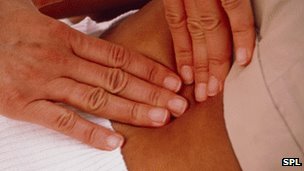has neurological, eye, ear, and skin symptoms. Research suggests it may be due to an autoimmune reaction in which the body attacks its own healthy cells that contain the pigment melanin. VKH syndrome does not shorten life span, but permanent eye and skin changes may result.
Symptoms:
Before Vogt-Koyanagi-Harada syndrome begins, individuals usually experience symptoms such as headache, vertigo, nausea, stiff neck, vomiting, and low-grade fever for several days. These symptoms are not specific to VKH syndrome and may be diagnosed as a viral infection or influenza. What distinguishes VKH syndrome from “the flu” is the start of eye symptoms such as sudden blurry vision, pain, and sensitivity to light.
Typically, VKH syndrome consists of three phases:
a meningoencephalitis phase, an ophthalmic-auditory phase, and a convalescent phase.
In the meningoencephalitis phase, symptoms such as generalized muscle weakness, headache, loss of muscle use on one side of the body (hemiparesis or hemiplegia), joint pain (dysarthria), and difficulty speaking or understanding language (aphasia) occur.
In the ophthalmic-auditory phase, symptoms such as blurry vision, pain, and eye irritation due to inflammation of the iris (iridocyclitis) and uvea (uveitis) occur. Auditory symptoms may include difficulty hearing, ringing in the ear (tinnitus), or dizziness.
In the convalescent phase, skins symptoms such as light or white patches of color in the hair, eyebrows, or eyelashes (poliosis), light or white patches of skin (vitiligo), and hair loss (alopecia) appear. The skin symptoms usually begin several weeks or months after the vision and hearing symptoms start.
Diagnosis:
Because Vogt-Koyanagi-Harada syndrome is rare, a correct diagnosis usually requires consultation with specialists. There is no specific test for the syndrome, so diagnosis is based on the symptoms present plus test results. A neurologist will perform a lumbar puncture to examine the cerebrospinal fluid (CSF) for changes characteristic of VKH syndrome. An ophthalmologist will perform special testing of the eyes to look for uveitis. A dermatologist will take a skin sample (biopsy) about one month after the eye symptoms begin to check for changes characteristic of VKH syndrome, such as lack of pigment (melanin) in light or white patches of skin that are present.
For Daily GK Updates Like Facebook











::::Your Comments are Valuable for Us-Post your queries below::::.